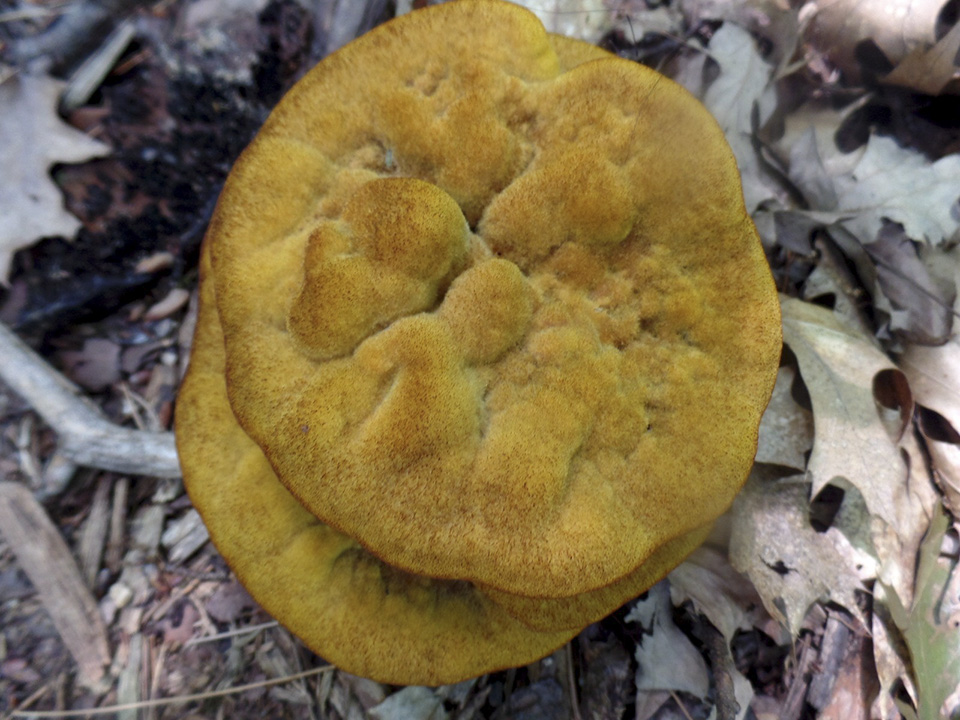
Dyer’s Polypore (Phaeolus schweinitzii) is one of the most common large polypores in coniferous forests throughout North America. It is used to prepare fabric dyes of various colors, but is also a significant pest to the timber industry in western United States.
The fruiting body is a large, bracket-shaped polypore (conk). It usually appears on the ground as a rosette or an overlapping tier of brackets at or near the base of a large coniferous tree. In Minnesota it is most common on white pine. It attacks the living roots and the heartwood of older trees, causing the disease called red-brown butt rot. The lower 10 to 20 feet of the trunk, the most valuable part for the timber industry, is weakened or hollowed, making the tree susceptible to falling over. On young trees the fungus causes root rot which is also fatal.
The cap is 2″ to 12″ wide and circular when growing on the ground, semicircular or fan-shaped when on a trunk. When young it is soft, spongy, light brownish-yellow to orange, and densely covered with velvety hairs. As it ages it becomes hard, less hairy, and turns dark brown from the center outwards. Older specimens are brittle and dark brown or black, looking something like a cow pie. It is probably poisonous.
